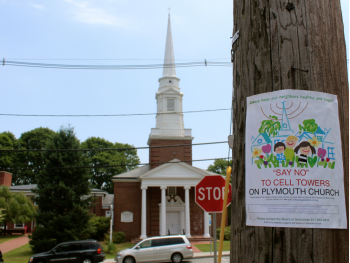Photo:
Belmont votes today, Tuesday, March 1 in the 2016 Massachusetts Presidential Primary.
POLLS ARE OPEN FROM 7 A.M. TO 8 P.M.
Voters are encouraged to check their voter registration status and voting precinct before they go to vote by visiting the Town Clerk’s web page.
Voters who have not returned a census in 2015 or 2016 are classified as “inactive” voters, a status that requires the voter to present identification to return to the active voting rolls. Think about carrying your ID when you go to vote to make the process simpler on election day.
BELMONT VOTING LOCATIONS
- Precinct One: Belmont Public Library, Assembly Room, 336 Concord Ave.
- Precinct Two: Belmont Town Hall, Selectmen’s Room, 455 Concord Ave.
- Precinct Three: Beech Street Center, 266 Beech St.
- Precinct Four: Daniel Butler School Gym, 90 White St.
- Precinct Five: Beech Street Center, 266 Beech St.
- Precinct Six: Belmont Fire Headquarters, 299 Trapelo Rd.
- Precinct Seven: Burbank School Gym, 266 School St.
- Precinct Eight: Winn Brook School Gym, 97 Waterhouse Rd., Enter From Cross Street.
Don’t know your voting precinct? Visit the Town Clerk’s website for a list of Belmont precinct assignments by street:
- Select Town Departments,
- Select Town Clerk,
- then select Elections: Information for Residents and scroll down the page.
Or go directly here.
WHO CAN VOTE, AND FOR WHOM
Your enrollment as a voter will determine which party ballot you will receive at the polls.
There are four political parties in Massachusetts. If you are enrolled in one of these four political parties when you go to the polls, you can only vote for that particular party:
- D – Democratic Party
- R – Republican Party
- J – Green-Rainbow Party
- CC – United Independent Party
Only voters who are not affiliated with a political party, called Unenrolled (U – commonly known as No Party or “Independent”) and voters in Political Designations may choose any one of the four party ballots when voting in Primary Elections.
ARRIVE EARLY, CONSIDER TRAFFIC AND LIMITED PARKING
Belmont Police will designate some voter parking at each of the polling locations however with a very busy election, parking close to the voting sites is often a challenge. Plan ahead: consider walking, carpooling with a friend or voting “off peak” during the middle of the day. Only voters who arrive at the precinct and are in line for the Voter Check-In before the close of polls at 8 p.m. can be permitted to vote; those who come too late will miss out.
If you would like further clarification of your party, voting status, voting precinct or have any other questions related to the upcoming election, please call the Belmont Town Clerk’s Office at 617-993-2600 or email: townclerk@belmont-ma.gov

